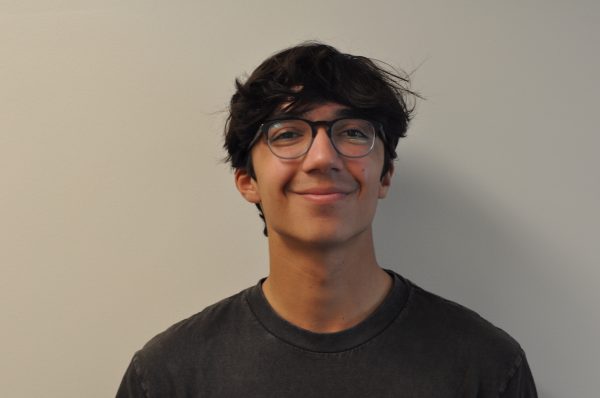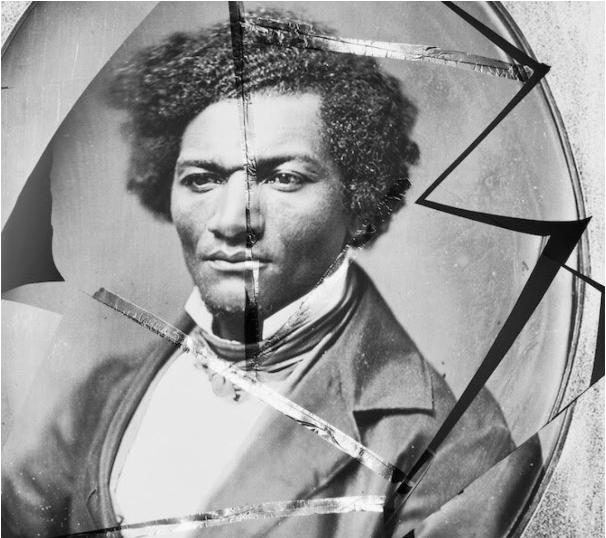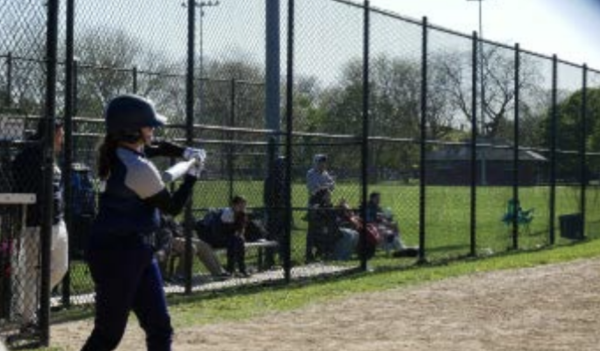A Photogenic City
Photography Students Go on a Field Trip to Discover Chicago’s Past
Photo credit: Deven Gupta
Students observed an abstract 3d photo of Fredrick Douglass by Aaron Turner.
Chicago has one of the deepest histories of any American city that’s been captured through camera lenses. On Thursday, January 5, the photography class went on a field trip to see how that history has been captured through different events. The field trip lasted the whole day, and students from Photography 1 and 2 were excited to observe Chicago’s historic sites.
The main part of the field trip was going to the Museum of Contemporary Photography, at Columbia College, where students looked at the exhibit ‘Refracting Histories.’ The museum is located in downtown Chicago on South Michigan Avenue.
The Exhibit features many unique photos, all with the goal of helping viewers visualize lost histories. One photo depicts human arms and legs hanging on to stones and handcuffs–an allusion to Chicago’s Red Summer.
On the exhibit website, it says, “Each artist challenges, probes, or deconstructs well-known art historical legacies, revealing the contributions of overlooked makers as well as pervasive discrimination that maintains the status quo.” Every semester, photography teacher Katie Palmer takes her classes on a field trip to see different exhibits. She said, “We saw portraits of Obama before he became president, Dorothea Lange’s photos of the depression.” The exhibit featured a wide variety of work that covered a vast timeline. Some of the photos were very intense, using vibrant and unique effects, which showed the students how photos could touch human emotions.
Throughout the semester, the students have done portraits and a constructive landscape project. Reid Albert, a senior who is in Photo 2 said, “It was cool to see portraits and landscapes because we did a lot of that this semester.” Albert noted that seeing photos done by professional photographers gave him a lot of inspiration, allowing him to take away some of the key techniques that they used.
After going to the exhibit, the group went to the Chicago Athletic Association for lunch – another historic place in Chicago. “The Chicago Athletic Association was originally built during the World’s Fair in 1893, and it contained a lot of history,” Palmer noted. It was a pretty open facility, allowing the students to capture some photos of their own. “You can see this grand area of Chicago’s past in the interiors,” Palmer said, “so it was really cool to take pictures of it.” The old columns from when the building was constructed still stand, and Albert said, “it was really cool to walk into a room that was so influential and historical.”
The day wasn’t over yet. After lunch, Palmer and the students walked over to the Art Institute of Chicago to roam around and discover types of art. “It was a really fun day,” Albert said. Albert also took photography last year and said, “I really loved going on this field trip and the one last year because it shows a way to look at history that is rare. The exhibits were very surreal and one of the best ways to connect to your city’s past.”
As the students completed their final projects, they implemented as many of the techniques that they learned, such as blurred 3D landscapes and portraiture, into their work.








